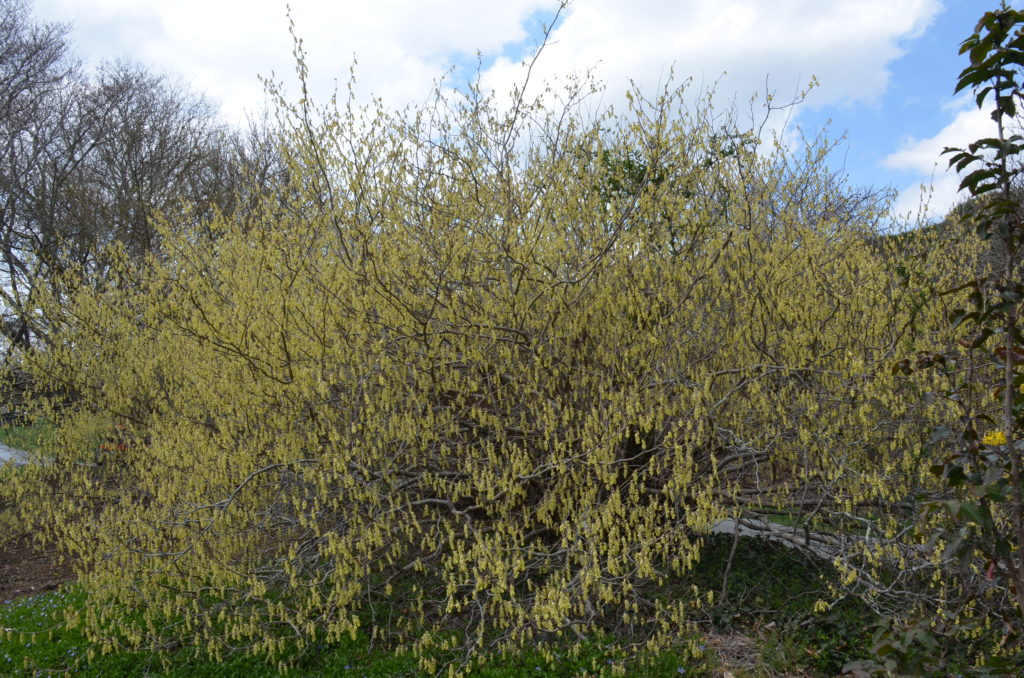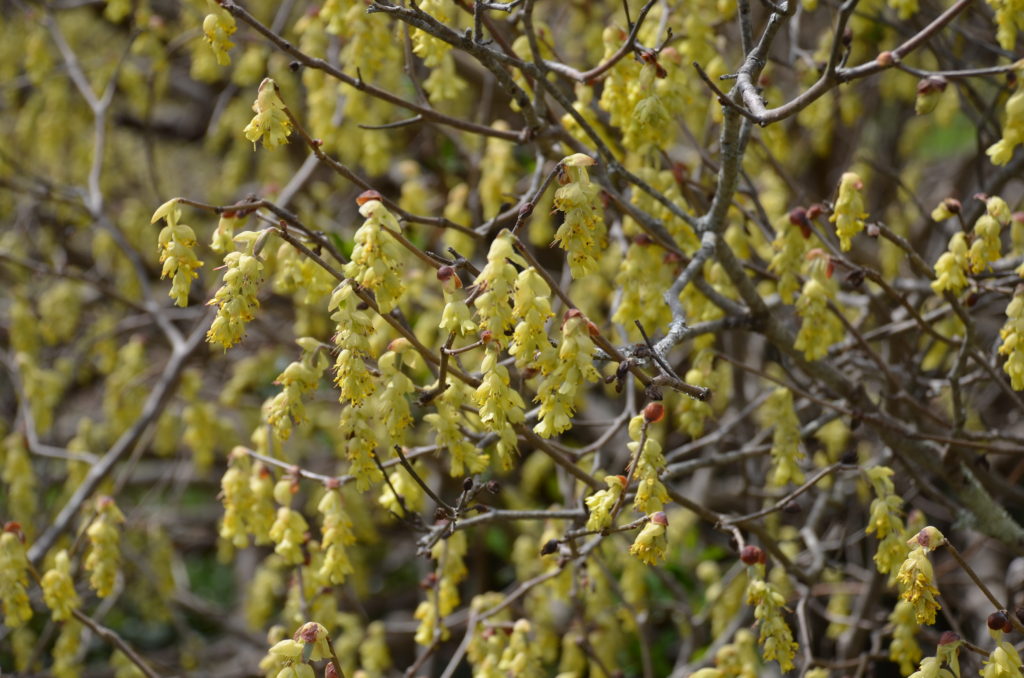I

Winterhazels (Corylopsis spp.), native to China and Japan, is a wonderful genus comprised of winter flowering shrubs of varying heights and widths (USDA hardiness zones 5 to 8). Few U.S. gardeners know of them. Their bright yellow flowers are a lot bigger and showier than the witchhazels (Hamamelis spp.) which are close botanical relatives. In my early March garden the winterhazels start blooming as the witchhazels are finishing up.
The winterhazels occupy partially shaded shrub borders or woodland areas. Eight species, sometimes more, are available from on-line nurseries. Spike winterhazel (C. spicata) and buttercup winterhazel (C. pauciflora) are low spreading forms that fit into smaller urban and suburban gardens. Their slightly fragrant flowers are lemony yellow with red-purple anthers.
Spike winterhazel grows to 4-8 feet tall and to 6-10 feet wide. Individual flowers, only 3/8 inches long, comprise small drooping clusters (racemes to 2 inches long); clusters hold 6-12 flowers. After bloom, 4-inch long circular (ovate to obovate) leaves unfold with a bronze-purple tint; within 2-3 weeks leaves take on a bluish-green color. Tiny hairs on the leaf surface give the leaves a dusty look by late summer. Fall leaf color is an yellowish-green. Fall seed capsules swell and hold two small seeds.
Winterhazels prefer a compost-rich, well-drained, acidic soil in full sun to part shade. They tolerate most garden soils except heavy clays. Plants favor shading from direct afternoon sun in southerly climate zones 7-8 as well as shelter from high winds. Flower buds/flowers are susceptible to cold injury if winter temperatures are severe.
After flowering or by late spring, prune winterhazels as needed to hold shrubs in check. Feed with 10-10-10 or equivalent granular fertilizer. No serious insect or disease problems trouble these low maintenance shrubs.
Significant cultivar: With its circular golden foliage, C. spicata ‘Aurea’ is an attention grabber from March through October. New spring foliage opens rosy-pink, turns golden yellow, and to bluish green by early summer. Nodding racemes of small, bell-shaped pale yellow flowers open in the late days of winter and last 2-3 weeks. Frigid nights in the mid- 20’s rarely trouble the blooms. Flower fragrance does not overwhelm.


 Posted in
Posted in 
